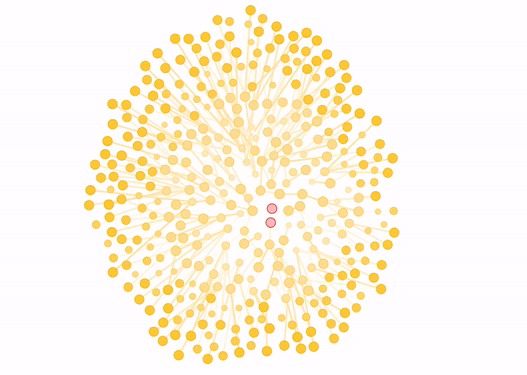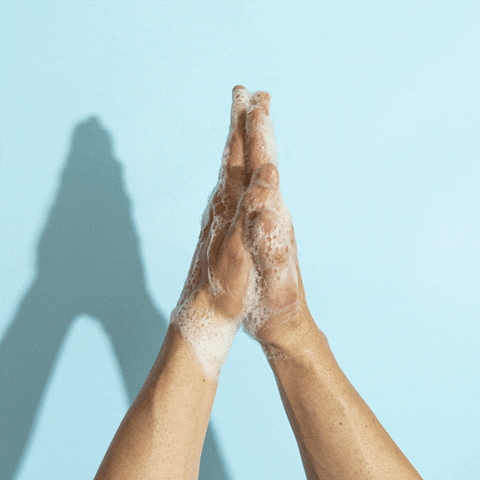
What is "Coronavirus?"
In December 2019 the Chinese authorities notified the world that a virus was spreading through their communities. In the following months, it spread to other countries, with cases doubling within days. This virus is called Covid-19.
Covid-19 may spread via surfaces, but it's still uncertain how long it can survive on them. Its main way of spreading seems to be droplet infection when people cough, or if you touch someone who's ill and then your face, say rubbing your eyes or nose. The virus starts its journey here and then hitches a ride as a stowaway deeper into the body. Its destinations are the intestines, the spleen, or the lungs, where it can have the most dramatic effect. Even just a few coronaviruses can cause quite a dramatic situation. The lungs are lined with billions of epithelial cells. These are the border cells of your body, lining your organs and mucosa waiting to be infected. Corona connects to a specific receptor on its victim's membranes to inject its genetic material. The cell, ignorant of what's happening, executes the new instructions, which are pretty simple: copy and reassemble. It fills up with more and more copies of the original virus until it reaches a critical point and receives one final order, self-destructs. The cell sort of melts away, releasing new corona particles ready to attack more cells. The number of infected cells grows exponentially. After about 10 days, millions of body cells are infected, and billions of viruses are swarming the lungs.
COVID-19 in numbers
Below are informational graphs highlighting the trends and data of Covid-19 and its trajectory.
How did it spread so fast?
Genetically, SARS-CoV-2, the new coronavirus, shares 86% of its sequencing with SARS-CoV. SARS-CoV is the initiator of the "first great pandemic of the 21st century," the SARS outbreak, infecting over 8,000 people from 2002-2004. However, the newer SARS-CoV-2 has already infected over 1 million people in the United States alone.
What allowed this virus to be much more infectious compared to its predecessors?
A combination of stronger structural components, novelty surrounding the virus, and no effective form of herd immunity has enabled the new coronavirus to wreak havoc in communities globally. The virus generally spreads through respiratory droplets: infected individuals cough or come in contact with you, and the virus reaches the mucus membranes. However, coronavirus has also been shown to be transmitted via surfaces, but it is still unknown on how long these viruses can live on different surfaces without a host.

How a Coronavirus can spread from 5 to 368 people in 5 cycles (Credit: The New York Times)
What kind of effect does it have on the body?

The virus starts its journey at your mucus membranes, and infiltrates the body, slowly making its way down to the lungs and staying dormant for up to 14 days. The lungs are lined with cells called the epithelial cells, surrounding the organs and acting as a border. SARS-CoV-2 connects to specific receptors on these epithelial cell membranes where it injects its genetic material. The cell, unknowingly, replicates the genes, then eventually conducting programmed cell death (apoptosis). This unleashes new viruses onto the body and the process repeats. The virus grows exponentially in the body, quickly overwhelming it. Now, the immune system is released, but it can do more harm than intended as the coronavirus infects these immune cells as well. The newly infected immune cells kill infected epithelial cells, but they kill just as many uninfected cells. This can lead to life long scar tissue forming in the lung tissue. In most cases, the immune system slowly regains control, kills the infected cells, and begins recovery. These cases experience mild symptoms such as fever and a dry cough. Unfortunately, many cases become severe. The virus can plow through the epithelial cells, the lungs' protective lining, exposing these vital organs. As such, bacteria can infect the exposed portions of the lungs, and secondary diseases such as pneumonia can occur.
What can we do?
There are many things that we as individuals can do to help prevent this pandemic, including:
-
Stay home: Staying home is going to drastically decrease the risk of you getting infected or coming in direct contact with someone who may have COVID-19.
-
Wash your hands: Washing your hands is one of the most effective ways to prevent getting infected. Make sure to use soap and thoroughly clean between your fingers and around your hands.
-
Maintain social distance: Make sure to maintain a distance of at least 6 feet from any other individual; research has determined that physical distance is the best way to prevent the spread of corona.
-
Be precautious: If you feel begin feeling sick or start coughing, monitor your symptoms closely. If symptoms persist, contact your doctor/hospital.


